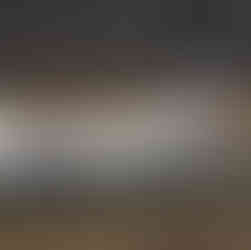Aviation: Budget carrier rivalry
- Tyler McDowell
- Jan 17, 2019
- 6 min read

The 1980s and ‘90s saw the founding of two of Europe's largest – and at times most controversial – airlines. They brought the ‘budget’ revolution from the United States, and in doing so changing the way people travelled. Tyler McDowell reviews the history and services provided by Ryanair and easyJet.
Irish upstart
Ryanair was formed in 1985 by the late Tony Ryan, who was keen on expanding the scope of his successful leasing firm Guinness Peat Aviation (GPA). His goal was to break the duopoly enjoyed by Aer Lingus and British Airways on air services between the Republic of Ireland and the United Kingdom. His fledgling airline began services between Waterford and London Gatwick in June 1985 using a leased 18-seat Embraer EMB110 Bandeirante. The carrier expanded when it opened a base at Dublin Airport and by the early 1990s it operated a fleet of aging BAC One-Eleven jets as well as some second hand ATR42 regional turboprops.
Ryan was keen on the then brand new Airbus A320 short haul aircraft, but his airline was badly in debt. His protégé and accountant, Michael O’Leary, recommended the loss-making airline be closed down but Ryan was aware of the low-cost business model pioneered in the USA by PSA and Southwest Airlines. Sir Freddie Laker had already tried his luck in that market, but regulatory restrictions and the determination of state-supported airlines to protect their revenue streams put Laker Airways out of business.

However, pan-European open-skies were on the horizon and in a last ditch attempt to save Ryanair, O’Leary was sent to Texas to study Southwest. Upon returning to Dublin, O’Leary was appointed CEO of Ryanair and began to change the loss making firm into a completely new airline. The One-Elevens and ATRs soon left, swapped for a single-type fleet made up of second-hand Boeing 737-200s. Amenities and inclusive extras were swept away while ticket prices were reduced, leaving passengers to choose whether they wanted to pay for seat assignments, hold baggage, food or beverages. The airline made money for the first time in years during 1995 and has since become a huge success story. It now flies more than 400 Boeing 737-800s while the name Ryanair, its blue and white livery, and the yellow harp on the tail, have become familiar across Europe. O'Leary remains at the helm almost 25 years after his fateful trip to the USA.
Enter Stelios
As Ryanair began to blossom Stelios Haji-Iannou, the son of a Greek shipping tycoon, was finding it frustrating being constantly under the wing of his successful father. Stelios wanted to prove he was capable of setting up and running his own company and convinced Haji-Iannou senior to give him £5.8m to start an airline. Liberalisation was enabling airlines to open new routes across Europe and, following in O’Leary’s footsteps, Stelios went to the USA to study Southwest's approach to budget air travel.

easyJet initially launched with two leased Boeing 737-200s, its proposition being to sell flights for the same prices as a pair of jeans. The bright orange and white Boeings took off from Luton Airport in November 1995, with Glasgow and Edinburgh being the first routes. Within a year 737-300s were added to the fleet and Amsterdam became the airline's first international services. The carrier went on to acquire rival GoFly (British Airways’ budget brand) in 2003 and then GB Airways in 2008. In the mid-2000s a decision to switch to Airbus A319s and A320s was made, and easyJet now operates more than 250 of the family including A321s and the latest neo derivatives. Stelios stepped down in 2003, though he maintains a majority shareholding in the company. He went on to extended the reach of the ‘easy’ brand into industries including car hire, internet cafes, cruises, and cinemas through the formation of easyGroup.
Blue versus Orange
The leading two of the big four budget carriers in Europe (the others being Wizz Air and Norwegian) only go head-to-head on a limited selection of routes but both offer a product worthy of consideration when the destination is right. How do they compare? My easyJet experience is based on a London to Luxembourg flight, while for Ryanair I chose one of many London to Cologne-Bonn hops.
Starting with the cost of the flights:
easyJet:
Basic airfare: £17.00
Seat selection: £3.95
Airport: Gatwick (LGW – 45-50 minutes drive from Windsor)
Ryanair:
Basic airfare: £9.99
Seat Selection: £5.99
Airport: Stansted (STN – 75-80 minutes drive from Windsor)
As I prefer having an assigned seat, Ryanair came out the winner by around £5.00 even though the trip into Germany involved flying a little further. However, Gatwick Airport was a better proposition than Stansted due to its proximity. Ryanair’s large base at STN means it offers a wide network and low fares from the north-London airport, while the same is true for easyJet to the south of the capital. Both also provide more restricted options from London Luton. easyJet’s seat selection is usually cheaper, but Ryanair sometimes offers discounted extras during the off season and on quieter routes – places in rows 24 to 32 on its 737s can go for as little as £2 each way on some occasions. As both trips were days out I didn't take the hold baggage options, and I rarely see ‘priority’ or ‘speedy’ boarding executed as it should be so I don't find those add-ons worthwhile either.
In flight

On each flight I took the airlines provided ‘classic’ cabins – configurations that were the norm before the introduction of slim-line seats and updated interiors. easyJet’s A319 carry 156 passengers while Ryanair’s 737s are capable of accommodating 189. The fabric used in the easyJet A319 dates to the 737-300 / -700 era and has not been updated recently as the fleet is gradually being retired – the carrier’s later black covering is only used in its Airbus A320 and A320neo aircraft.

Ryanair’s cabin was the same as was seen when it took its first 737-800 in 1998, although it began to update its fleet in 2014. Legroom on both was similar – almost as tight as it could be – although I had little trouble reaching my assigned window seat and completed the flight in reasonable comfort.

Both Ryanair and easyJet offer a buy on board café / bistro for inflight service. Meal deals are available for £10 / 10EUR, which can be paid using cash or card. On easyJet I ordered the calzone with Pringles and a cola, which cost £10 as a meal deal. While travelling with Ryanair I tried something different – a snack box for 6.00EUR and a hot chocolate for 2.50EUR. Both airlines offered very similar products but I'll give Ryanair the lead in this area as it is adding more items to its menus this year. The Irish carrier’s ‘deals’ are also a little cheaper as they are priced in Euros rather than Pounds. For arrivals, I'll give easyJet the win as Ryanair always seems to go for hard and heavy landings.
Breaking down the two overall experiences, it becomes possible to identify a winner:
Base fare: Ryanair
Seat reservation fee: easyJet
Buy on board: Ryanair
London airport: easyJet
Seat comfort: easyJet
Destination network: Ryanair
Interior design: Ryanair
With four of seven categories going to Ryanair, I found the Irish airline to be a better choice. However, that’s not to say easyJet is a bad airline – it isn’t. Both carriers have positive and negative traits, and experiences could obviously vary depending the staff working the flights and the operational conditions at the time.
Networks and competition

Another thing to consider is the network each airline serves. Ryanair tends to fly to secondary airports and smaller towns that have quieter airfields further away from main cities to keep its costs down. Its destinations are not always convenient for people wanting to travel to larger conurbations or popular hubs. For example, Stockholm Skvaska is 100km from Sweden’s capital – not a particularly pleasant bus ride a family with young children or anyone short of time. easyJet has a network that is targeted major gateways, as well as regional community airports. Ryanair offers a wider choice though, as easyJet is not present in some countries despite having an advertising campaign in the past that proposed to "Turn Europe Orange."
Here are just a few examples of how the airlines compare in major cities:
London Gatwick vs London Stansted
Paris Charles de Gaulle vs Paris Beauvais
Rome Fumincio vs Rome Ciampino
Milan Bergamo vs Milan Linate
Glasgow Prestwick vs Glasgow International
In three cases (Milan, Paris and Glasgow) Ryanair serves a more distant and less well-known airport, while Rome and London arguably represent draws.
Both carriers have a heavy presence on routes from the UK and Germany to Spain, Greece and other tourist destinations in Europe. Although they are subject to substantial competition from other operators including national airlines and charter firms, these routes often have more expensive fares, especially during the holiday season between late June and early September. Nevertheless, the size of easyJet and Ryanair means they can often undercut the opposition while offer a wider network.
Feedback
Do you have any thoughts on which airline is best? If so please provide some feedback – it would be good to hear other people's experiences, both good and bad.
Text and photos © Tyler McDowell




































